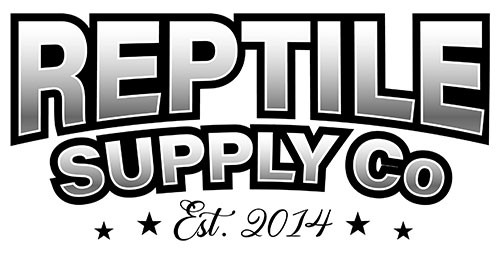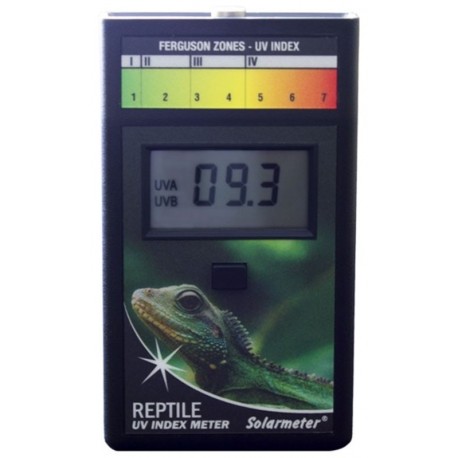No Products
Reptile UV Index Meter - 6.5R (Solarmeter)
RUVIM-65R
Solarmeter's new Model 6.5R Reptile UV Index Meter updates their original Model 6.5 UV Index Meter with attractive, informative graphics, specifically designed for reptile husbandry. Many scientists and breeders worldwide rely on the original Model 6.5 UV Index Meter, so the new Model 6.5R is unchanged operationally or in terms of specifications from the original.
This product is currently out of stock.
More info
FEATURES:
- Spectral Response Erythemally Weighted to Match Vitamin-D Action Spectrum in Reptiles
- Ferguson Zone Chart On Meter Front Panel For Easy Reference
- Compact, Handheld, and Durable
- Simple Single-Button Operation
- NIST Traceable Accuracy
- LCD Display
- Made In USA
APPLICATIONS:
- Measures UV Irradiance In The Wavelengths That Enable Vitamin D3 Synthesis in Reptiles
- Monitors Instantaneous UV Index
- Allows UV Index Tracking Over Time
WHAT IS THE UV INDEX?
Developed by the World Health Organization, the UV Index is a measure of the UV radiation from sunlight that contributes to vitamin D synthesis, as well as skin and eye damage. It is NOT simply a measure of total UVB, but instead measures only the specific UVB (and some UVA) wavelengths that are responsible for the biological processes mentioned above. Not all UVB wavelengths are equal in their ability to promote vitamin D synthesis. The UVI index takes this into account, with each wavelength “weighted” differently depending on how effective it is at promoting vitamin D synthesis. The UVI index is often given in weather reports and uses a color coded scale to indicate UV intensity.
HOW DOES THE UV INDEX METER COMPARE TO UVB METERS?
UVB meters are useful for determining whether or not a lamp is emitting UVB, and also for tracking the decay in UVB over time (called depreciation). They are not ideal for making comparisons between different types or brands of UVB lamps. Also, they are not useful in determining if a lamp is both safe and effective for use with reptiles. In fact, at a set distance, two lamps can produce very different UVB readings, but have the same UV Index reading (and vise versa). Since the UV Index meter only “sees” the wavelengths that contribute to vitamin D synthesis, as well as eye/skin damage, it can be used for the following:
- To determine if a lamp is safe for use with reptiles
- To determine the appropriate distance from the lamp to the basking site
- To make comparisons between different types and brands of lamps, and between lamps and the sun
HOW DOES THE UV INDEX APPLY TO REPTILES?
The UV Index was developed as a tool for evaluating human risk of UV exposure outdoors. So how do we use it to evaluate UV lamps designed for use with reptiles in terrariums? This question was approached scientifically by a team of researchers led by the prominent herpetologist; Gary Ferguson, Ph.D. In their study, they took UV Index readings throughout the day in locations where they observed different species basking outdoors in sunlight or living in the shade. Using these UV Index readings, they were able to make recommendations for appropriate UV levels by creating four different UV Index “zones.” These zones were named the “Ferguson Zones” by Frances Baines (one of the authors and noted reptile photobiologist).
WHICH ZONE IS RIGHT FOR MY SPECIES?
Zone 1: UVI 0.4 to 0.7 (Shade/Crepuscular) Species in this zone can be either diurnal (active during the day) or crepuscular (active at dawn or dusk). They avoid direct sunlight exposure and are able to meet their vitamin D requirements through exposure to low levels of UVB typically found in the shade, or at dawn or dusk.
Zone 2: UVI 0.7 to 1.0 (Mostly partial sun/Occasional full sun baskers) This is a small range that is very close to Zone 1, but species in this zone will occasionally venture out into full sunlight for short periods of time. Examples include Green Anoles (Anolis carolinensis), Water Dragons (Physignathus cocincinus), Day Geckos (Phelsuma species), Skinks, Box Turtles (Terrapene species), Garter and Ribbon Snakes (Thamnophis species) and most species of diurnal Colubrid snakes (like Kings Snakes and Gopher Snakes). This zone is also recommended for Old World Chameleons (Panther Chameleons, Jackson’s Chameleons, and other Chameleo species). If you’re unsure what the appropriate zone is for a given species, Zone 2 can be used as a safe and effective level that will prevent the onset of metabolic bone disease or nutritional secondary hyperparathyroidism (NSHP).
Zone 3: UVI 1.0 to 2.6 (Mostly full sun/Occasional partial sun baskers) Zone 3 covers a fairly broad range and includes many species common to herpetoculture. These temperate, tropical, and sub-tropical species will bask in full sun early in the day or early afternoon. During mid day, they may be found basking when conditions are partly cloudy. This zone is appropriate for most species of aquatic turtles and tortoises. Many of the small spiny lizards of the genus Sceloporus fall into this zone, Monitors and Tegus, as well as Green Iguanas (Iguana iguana) and Curly-tailed Lizards of the genus Leiocephalus. With zone 3 and above, it is VERY IMPORTANT to provide a UVB gradient down to zone 1 UVB levels so that reptiles can “photoregulate” and adjust their UVB exposure as needed. Failure to provide a UVB gradient can result in illness, eye & skin damage, or even death.
Zone 4: UVI 2.6 to 3.5 or more (Mid day full sun baskers) Zone 4 species would include the majority of “desert” species that bask in full sunlight, even after Zone 3 species have retreated into burrows or the shade. Examples include Bearded Dragons (Pogona vitticeps), Uromastyx lizards, and Desert Iguanas (Dipsosaurus dorsalis). IMPORTANT: Just as with zone 3, it is critical that the habitat is large enough to provide a UVB gradient down to zone 1 levels to allow reptiles to photoregulate and adjust their UVB exposure. Failure to provide a UVB gradient can result in illness, eye & skin damage, or even death. Avoid UVI levels of 8.0 or more for zone 4 species as even the most sun-loving species retreat from full sunlight at these high levels (see lamp safety notes below for more info).
EVALUATING LAMP SAFETY
A major advantage of using the UV Index to evaluate reptile lighting is that readings can be compared to natural UV Index readings recorded in reptiles' natural habitats throughout the year at times when reptiles are active. The highest UVI readings recorded at solar noon in summer in the deserts of the USA and Australia range from 14.0 to 20.0. At these levels, reptiles are not active and have retreated into burrows or the shade for safety. DO NOT attempt to achieve these levels in the terrarium at the basking site. It is unsafe for people to be outdoors without adequate skin protection at these levels. Research has shown that reptiles retreat from full sunlight when UVI levels are around 8.0 or higher. If a lamp produces UVI readings of 8.0 or higher at the basking site, then the lamp is unsafe and should be moved further away from the habitat or replaced with a different lamp. A lamp that is producing UVI readings of 8 or more at manufacturer recommended basking distances is unsafe and should not be used as this can result in illness, eye & skin damage, or even death.
METER OPERATING INSTRUCTIONS:
Lift the flap on the protective case to expose the sensor. Aim the sensor directly at the UV light source and press and hold the button on the meter to obtain a reading on the display. Measurements can be taken with screen mesh between the lamp and the sensor to determine the percent reduction in light output caused by the mesh. Be sure to store the meter in a dry location as exposure to high humidity levels can cause the meter to malfunction and give inaccurately high readings. Check the meter by covering the sensor and pressing the button. The meter should read 0.00 with the sensor covered. Readings above 0.03 or higher with the sensor covered are abnormal. If the meter display becomes dim, the battery should be replaced. Annual replacement of the 9 volt battery is recommended. To access the battery, simply slide the cover off of the back of the meter.
IMPORTANT NOTES
UVB Gradient: When placing UVB lamps over a terrarium, it is imperative that the lamp is positioned in a way that creates a UVB gradient in the habitat. UVB will be strongest close to the lamp, and will gradually decrease with distance. This can often be achieved by placing the lamp fixture above the terrarium and off to one end of the habitat. Verify that the desired UVI levels and gradient are achieved using the UVI meter. The habitat must be large enough to provide this gradient and allow reptiles to photoregulate (adjust their exposure to UVB as needed). For all zones, always provide a shelter for reptiles to retreat completely from any light and UVB exposure.
Shade method vs. Sunbeam method: Two methods of providing UVB for reptiles are described by Frances Baines. Ferguson UVI zones 1 and 2 approximate UVB levels that would be found in the shade, in the canopy of a tree, or on partly cloudy days. These levels are often achieved over the majority of the habitat using fluorescent lamps that span the length of the terrarium, just as the levels would be uniform outdoors in the shade or on an overcast day. When providing UVI for zone 3 and 4 species, ideally, the Sunbeam method should be used, where the appropriate zone is provided over about half the length of the terrarium, and higher levels (in the range UVI 3.0 - 7.0) are created over just the basking site, to simulate direct sunlight. A gradient down to zero UVI is achieved in the rest of the habitat.
Temperature gradient: The biological process where vitamin D is synthesized in the skin following exposure to UVB can only occur when the proper temperatures are present. This process is heat dependent, so it is critical to research the temperature requirements of various species and provide the “POTZ” (preferred optimum temperature zone) in their habitat. Whenever possible, place the heat source as close as possible to the UVB source.
Watch for abnormal behaviors: It is important to monitor the reptile’s behavior following the introduction of a new UVB lamp. If the reptile spends unusually long periods of time basking as close as possible to the UVB and heat lamp(s), then the temperature and/or UVI level may be too low for that species. If a species appears to be trying to avoid the UVB lamp, spending most of its time as far from the lamp as possible then the lamp may be too strong. Under ideal conditions, reptiles should spend some time basking, and should also move throughout the habitat to perform natural behaviors (feeding, sleeping, etc.). Be sure to check both the UVB and temperature levels in the habitat.
Reflectors and screen mesh: Reflectors can have a great effect on the total UV output from a lamp, sometimes increasing the measured UV output by 30% or more when an effective reflector is used. Be sure to test your lamp in the fixture that will be used on the habitat. Additionally, screen mesh between the lamp and the basking site usually causes a significant reduction in UVB. The percentage of UVB reduction varies with different types/sizes of mesh. Be sure to check UVI levels through the mesh to determine the percent reduction caused by the mesh being used. Glass and most plastics filter all UVB emissions and should not be placed between the lamp and animals.
Lamp brightness: Lamp brightness is measured in lumens or lux. Lumens is a measure of the total light emitted by a lamp and can only be measured with highly specialized equipment. Lux is another measure of brightness, and measures the amount of light that is cast over a given area (lumens/meter). This can be measured with affordable handheld meters. It is important to consider the amount of light that is being provided by the combination of lamps used over a given habitat. Lux readings can range from 100 lux on an overcast day to 10,000 lux in full sunlight. If a reptile UVB lamp is noticeably dim (especially compared to normal room lighting), then the addition of a bright light source is recommended. Lux readings lower than 500 should be avoided for any habitat. Be sure to avoid looking directly at UVB lamps to prevent possible eye damage. The information presented above is provided as a guideline for measuring lamps and providing appropriate levels of UVB for various reptile (and amphibian) species. Exact UVB requirements are not known for every species and UVB levels may need to be adjusted for each specific application.
REFERENCES & ADDITIONAL RESOURCES:
Bagnall, S. 2011 Apr. Rethinking Reptile Lighting. Reptiles: 20-31.
Ferguson GW, Brinker AM, Gehrmann WH, Bucklin SE, Baines FM, Mackin SJ. 2010. Voluntary exposure of some Western-Hemisphere snake and lizard species to ultraviolet-B radiation in the field: How much ultraviolet-B should a lizard or snake receive in captivity? Zoo Biol 29:317-334
Monthly Average UV Index. www2.epa.gov/sunwise/monthly-average-uv-index Accessed 2013 Oct 16.
What is the UV Index? www.who.int/uv/intersunprogramme/activities/uv_index- /en/index.html Accessed 2013 Oct 16.
Customers who bought this product also bought:
-
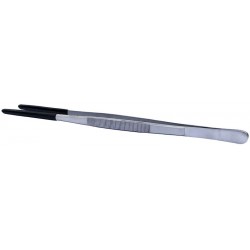
Tweezers w/...
High quality reptile tweezers with black rubber...
$8.99
-
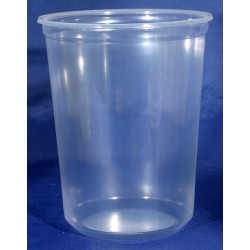
Fruit Fly...
These are the best cups for making Fruit Fly...
$0.45
-
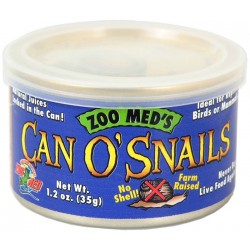
Can O'...
Medium size unshelled snails. Ideal for skinks,...
$4.99
-
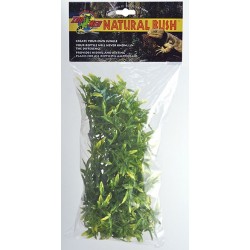
Bolivian...
Natural Bush Plants provide hiding and resting...
$8.99
-
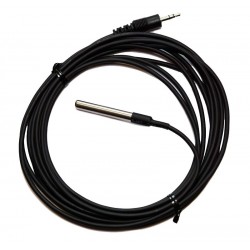
Herpstat...
These new steel-tipped probes are epoxy sealed...
$24.99
-
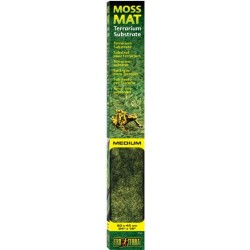
Moss Mat -...
Soft, hygienic and absorbent, the Exo Terra...
$10.49

